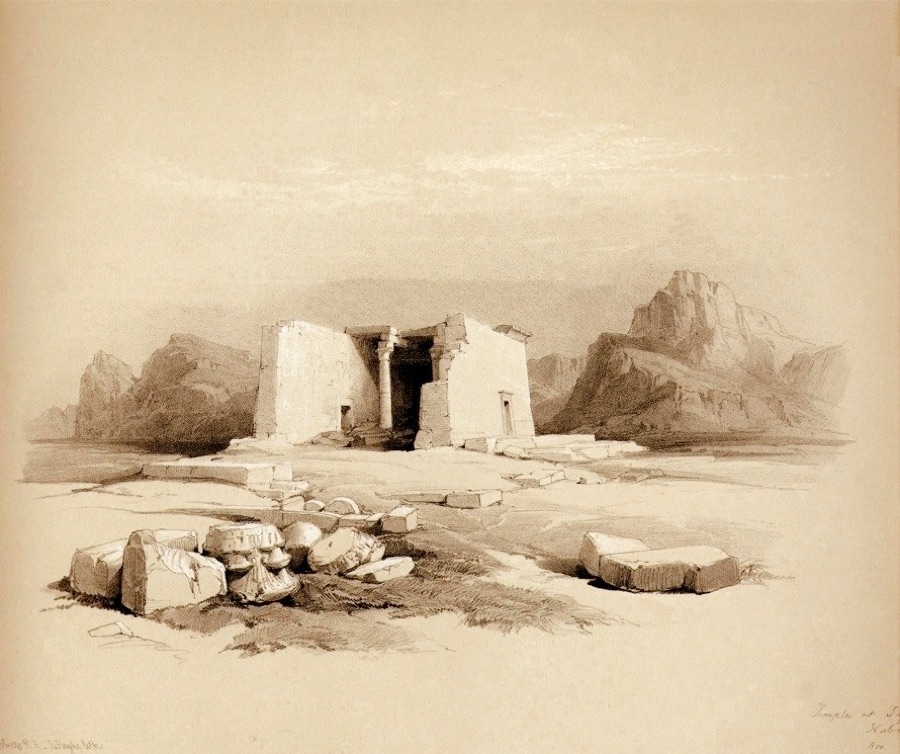TEMPLE OF TAFA IN NUBIA.
THE ruins of ancient Taphis are situated on the left bank of the Nile, a little below Kalabshe. Here are numerous inclosures of stone of singular arrangement, which, Wilkinson conjectures, were of Roman date: there are also the remains of two small temples of nearly the same size, about thirty feet square within. One of these stands in the middle of the village; the other, the southernmost, is here represented. It lies near the bank, beyond some dhourra-fields, and faces the river: the back, and the two side walls, and two of the columns which support the roof, are yet standing. “The columns,” Mr. Roberts says, “have the lotus-leaf capitals, of very poor workmanship; the shafts taper greatly, and are disproportioned to the capitals, which are too small.” Behind the portico is a chamber, which may have been the adytum. This temple has been used as a Christian church. On the walls are many ill-written Greek inscriptions, and a Greek almanac. There are also rude paintings of saints of the Christian Church, a representation of the Virgin and Child, and designs for the Ascension and the Nativity; but they are nearly obliterated. In Wansleb’s time, 1673, the churches of Ethiopia were still entire, but closed for want of pastors. The decline of Christianity here is dated from the invasion of Sultan Selim, A.D. 1517.
The plain of Taphis is strewn with fragments of cornices and mouldings, mostly of a late epoch, nor are any found that appear to be older than the time of the Cæsars; and much of what remains Wilkinson attributes to an age posterior to that of Pliny.
Wilkinson’s Egypt and Thebes. Roberts’s Journal.


